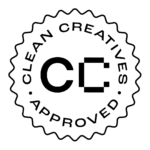Knowing your audience is crucial to a successful marketing campaign, and there’s a bit more to it than simply having a good idea of who buys your products or uses your services. It reaches much further than just your existing customer. Great campaigns factor in all the important stakeholders and understanding your audience, the different groups, segments and types of stakeholders will help you do just that.
Why is audience important?
Essentially, understanding your audience will give all your communications and campaigns focus. This information is the starting point for all aspects of your marketing – creating and developing your value proposition, how your brand looks and feels, the language you use, which marketing channels and sales processes you use and your search marketing strategy. We need to know our customers as well as we know our friends if we’re going to create marketing content that really resonates with them.
More than one audience group
So, how do you start to really get to know your audience? It may seem obvious to you, you’ve got a good idea who you intend to be using your products and services but by really drilling down who you’re looking at you can understand why they are part of your target audience and how communications and messages can be better tailored to fit their needs. One simple exercise you can do is to look at your business and brand through the eyes of 4 or 5 distinct stakeholder groups:
- Your people or staff
- Your existing customers
- Your potential customers
- Suppliers or referrers
- Investors
Could you make your messages clearer to each of these groups? Where do audience group values match and where do they differ? Do you create regular communications for each of these audience segments? Or do you fall into the trap of just creating marketing campaigns to attract new customers and miss the opportunity to engage your team, your existing longstanding customers and even your referral or supplier network? Looking properly at each of these different groups can help you to establish what the motivations of each target audience are and how well you’re currently communicating with them. Then you can dig a little deeper.
Personas
Once you have got a good feel for your audience segments you can start to build your customer personas. This is where you create a detailed picture of 2 to 3 customers by using insights, demographics, stats and user information to create a persona profile based on criteria such as:
- Age
- Gender
- Role or title
- Location
- Personal goals
- Motivations
- Fears
- Where do they hang out?
- What channels do they use?
Using these tools to create personas enables you to not only build the foundations of a great marketing strategy but also create truly tailored marketing campaigns that engage the right target audience. You can start to think about how you want each target audience to react to your brand. What do you want them to think? You might want your target audience to think that your product is of high quality and the best in the market. What do you want them to feel? Consider their emotional connection to your business – you may want them to feel a sense of exclusivity when they align themselves with your brand. Finally, what do you want them to do? This question is particularly important for your campaign communications – what is your call to action? Whether it is purchasing, downloading, reviewing, voting or physically attending an event, do you need to tailor different call to action messages for different personas? From your mailing lists to your social media outputs, your customer personas can help bring your brand to life and ensure you are targeting the right people, in the right place with the right message.
Asking the right questions
So far, you’ve taken time to analyse the ‘whos’ and the ‘whys’ of your target audiences. Let’s come back to basics for a minute and look at the ‘what’ as well. What problems are you solving for your customers and what do they like about buying your product or working with you?
- Time saving?
- Money saving?
- Removing a middleman?
- Great customer service?
The most straightforward way to get answers to these questions, is by simply asking them. There are many ways of conducting audience research, database analysis, keyword research, social media reports etc. but going direct to your target audience and finding out what they need is a straightforward approach to a straightforward question and it should never be underestimated. Remember, not everything in the garden is rosy, and you need to uncover the negatives too. Are you too expensive? Inaccessible to them? Considering these pain points for your customer again helps you tailor your messages, resolve issues and bottle necks and ultimately avoid the banana skin of assuming you’ve got it all covered, when you perhaps haven’t.
Still relevant?
OK, you did your personas and research years ago- but so many businesses fall foul of doing it once and letting it stop there. Are your audience groups still relevant – and are you still relevant to them? Sounds pretty deep but if you don’t take an honest look at this on a regular basis then your marketing can start to stagnate and your hard work on personas can become redundant.
When was the last time you reviewed your target audiences? If people have moved on and you haven’t adapted your strategy to match a new set of customer needs or audience segments it can not only dilute your marketing activity but could be driving your business in the totally wrong direction.
Truly knowing your audience means continually learning and adapting. Keep your audience under the spotlight and keep asking questions – even if you don’t think you’re going to like the answer. Consider planning in regular reviews of your strategy. You might find you need to adapt more and more quickly to stay ahead!


